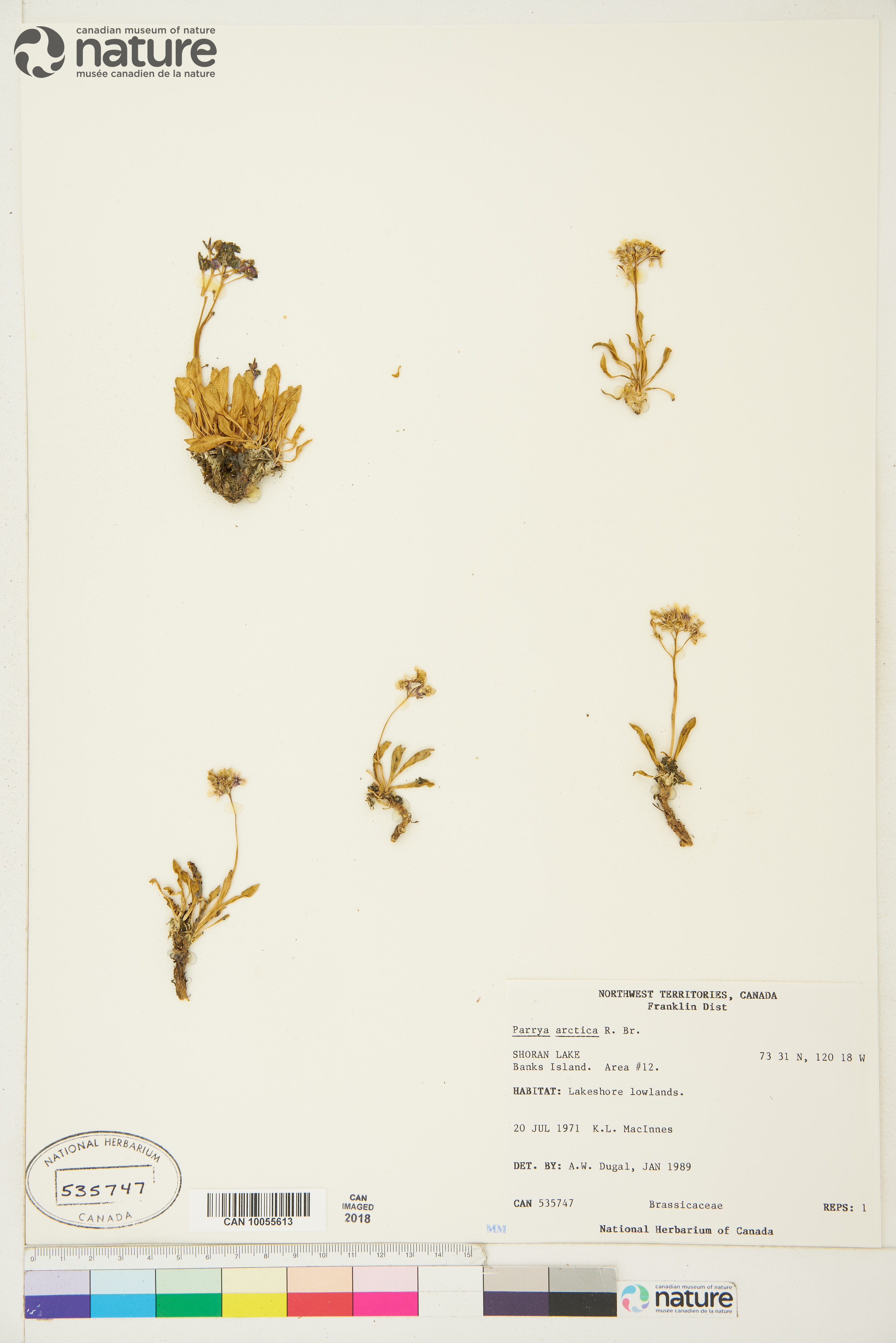Parrya
|
Family: Brassicaceae |
Perennials [subshrubs]; (caudex well-developed, often covered with persistent petiolar remains or leaves); scapose [not scapose]; glandular or eglandular, glabrous [pubescent]. Stems erect, unbranched. Leaves basal [sometimes cauline]; rosulate; petiolate; blade margins entire, subentire, or dentate [pinnately lobed]. Racemes (corymbose, 3-20-flowered, rarely proximalmost flowers bracteate), considerably elongated in fruit. Fruiting pedicels ascending or divaricate-ascending [erect]. Flowers: sepals ovate or oblong [linear], (unequal, glandular or eglandular); petals purple, lavender, or white [pink], obovate, claw differentiated from blade, (subequaling or longer than sepals, apex rounded or emarginate); stamens tetradynamous; filaments dilated or not basally; anthers oblong [linear], (apex obtuse); nectar glands lateral, annular or semi-annular. Fruits sessile or shortly stipitate (gynophore persistently attached to pedicel), not segmented, linear, oblong, or lanceolate, smooth or torulose, strongly latiseptate or, rarely, subterete or 4-angled; valves (leathery), each with prominent midvein and with obscure to distinct lateral and marginal veins, eglandular or glandular; replum almost always flattened (visible); septum complete; ovules 6-20[-50] per ovary; stigma conical or cylindric, 2-lobed (lobes prominent, connate, decurrent). Seeds often broadly winged, suborbicular to broadly ovate [oblong], strongly flattened; seed coat (smooth), not mucilaginous when wetted; cotyledons accumbent. x = 7. Selected reference Botschantzev, V. P. 1972. On Parrya R. Br., Neuroloma Andrz. and some other genera (Cruciferae). Bot. Zhurn. (Moscow & Leningrad) 57: 664-673.
|

